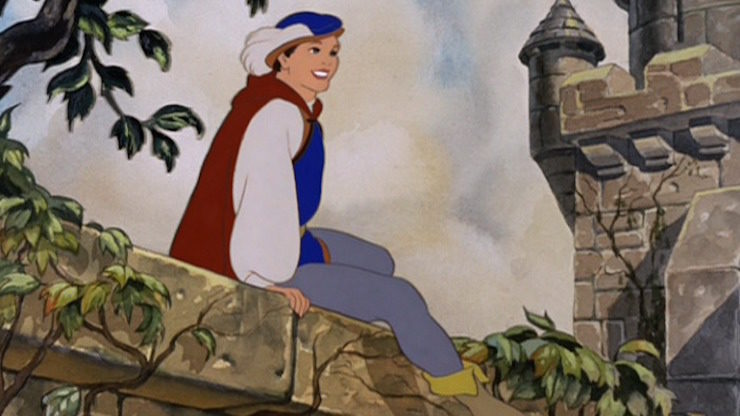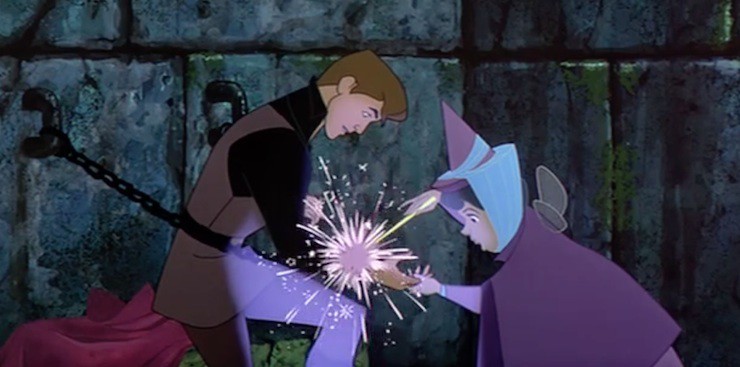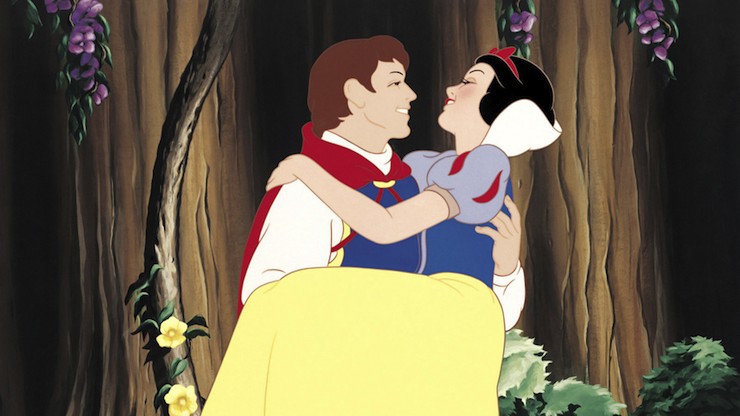I will admit up front that I have a strange affection for Prince Charming. He inspired the Charming Tales (available at fine book portals everywhere), and got me started on the road to a career as an author, or at least a published author. However, what made me interested in writing a story about Prince Charming was not that he was a particularly interesting character, but that he was entirely uninteresting. In fairytales filled with iconic beautiful princesses like Cinderella, Snow White, Beauty, and Briar Rose, the prince is, almost without exception, a non-entity. In fact, in fairytales prince characters are comically nondescript and interchangeable. Would the stories of Cinderella or Sleeping Beauty or Snow White be any different if Prince Phillip or Prince Charming or Prince “Noname” (literally—the prince in Snow White is never given a name) were swapped?
While people may think of Prince Charming as “dashing” and “handsome” and “magnificent,” if we are being completely honest, Prince Charming is rather flat and uninspiring. As an aside, I’m using the moniker “Prince Charming” to refer to that class of named and nameless fairytale princes that enter just in time to rescue the princess and carry her off to his castle and be his queen. Because of the vast shadow Disney throws over all things fairytale-ish, most people simply assume that the name “Prince Charming” was first introduced in the story Snow White. But in fact the prince in Snow White is never named in either the original fairytale or in Disney’s animated retelling of the story. Indeed, the name Prince Charming is not used by the Grimm Brothers or Perrault in any of their versions of the classic fairytales, although Perrault is often credited with coining the term. It is not until Andrew Lang sets down his version of Madame d’Aulnoy’s 17th century story The Blue Bird in 1889 that we have a member of the royalty (actually a king) called “Charming.” But it is not until Oscar Wilde writes The Picture of Dorian Gray in 1890 that the name “Prince Charming” is used in that exact form—in the story, “Prince Charming” references the title character, who it will be noted breaks his supposed love’s heart so that she is driven to commit suicide! Leave it to Oscar Wilde to jump right past all the romantic notions of Prince Charming that Disney has been trying to propagate since the 1930s to our more modern and cynical view of the character.
Putting aside the actual history of the name, the characteristics of what makes a “Prince Charming” character charming are so cliché and well-established that anyone with even a passing interest in the genre could list them. He must be royalty (a prince, preferably), brave (I mean who would fight a dragon for a girl he’s met once in a wood for about five minutes?), and of course handsome and dashing. Although on this last point it can be almost impossible to find a physical description of a prince in a fairytale story—it can be quite a fun game to try and uncover even one physical descriptor of Prince Charming in the original fairytale stories. What color is his hair? His eyes? How tall is he? Is he clean shaven? It is difficult, if not impossible to find any of these details. He is, in many respects, the perfect object of desire, being a blank canvas onto which our deepest desires may be drawn. Perhaps that is why Meriam-Webster defines “Prince Charming” as “a suitor who fulfills the dreams of his beloved.”
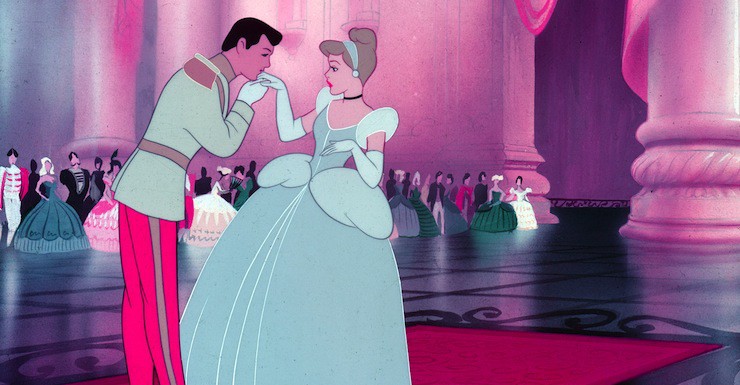
But what about the original princes upon which these universal characteristics have been drawn? Let’s examine the three most famous fairytale princes (those from Cinderella, Sleeping Beauty, and Snow White) to see if we can recognize the origins of these well accepted characteristics.
Now it happened that the king proclaimed a festival that was to last three days. All the beautiful young girls in the land were invited, so that his son could select a bride for himself. When the two stepsisters heard that they too had been invited, they were in high spirits.
–Aschenputtel
At least as far as the true modern determiner of fairytale lore—Disney—is concerned, the prince in Cinderella is Prince Charming. He is often thought of as the very model of princeliness, but in the story he is rather dull and oddly inert. Throughout the narrative he sits about while his father, the king, throws ball after ball hoping that the right woman will somehow come to his son’s attention. Indeed, in Disney’s version of the story the king seems to despair of his son ever finding any sort of woman at all, much less his true love, wailing to his advisor, “My son has been avoiding his responsibilities long enough! It’s high time he married and settled down.” Then, when the right woman does happen to pass under his nose only to vanish into the night, the prince can’t even be bothered to rouse himself to go look for her; instead the king sends out servants, under threat of beheading, to “search the land” for her on his behalf. To be fair to the prince, this is a later invention. In the original Brothers Grimm version of the story the prince does the podiatry activities personally.
Looking at our three virtues, the prince in Cinderella is certainly royalty, and perhaps he is handsome, although the original fairytales provide not a word one way or the other about him being dashing or good-looking. As for brave? I suppose there is sort of bravery in fitting the same shoe on every lady’s foot in the kingdom, particularly given the standards of personal grooming and washing of the time, but it isn’t a classical sort of bravery is it?
Finally he came to the old tower where Brier-Rose was lying asleep. The prince was so amazed at her beauty that he bent over and kissed her. At that moment she awoke, and with her the king and the queen, and all the attendants, and the horses and the dogs, and the pigeons on the roof, and the flies on the walls. The fire stood up and flickered, and then finished cooking the food. The roast sizzled away. The cook boxed the kitchen boy’s ears. And the maid finished plucking the chicken. Then the prince and Brier-Rose got married, and they lived long and happily until they died.
–Little Brier Rose
In Sleeping Beauty—entitled Little Brier Rose in the Brothers Grimm version—the prince at least goes on a quest for Briar Rose, but in the fairtyale all he has to do to secure his true love is decide to enter the thorn bushes surrounding her castle.
“Then one day a prince was traveling through the land. An old man told him about the belief that there was a castle behind the thorn hedge, with a wonderfully beautiful princess asleep inside with all of her attendants. His grandfather had told him that many princes had tried to penetrate the hedge, but that they had gotten stuck in the thorns and had been pricked to death.
‘I’m not afraid of that,’ said the prince. ‘I shall penetrate the hedge and free the beautiful Brier-Rose.’
He went forth, but when he came to the thorn hedge, it turned into flowers. They separated, and he walked through, but after he passed, they turned back into thorns.”
Again, there is no physical description of the prince other than that he is young and a prince, and therefore presumably of royal birth. In what to a modern reader would also amount to a fairly major plot hole, the story never explains why the thorns chose to let this particular prince past when no other prince was found worthy, regardless it does not amount to a particularly impressive feat. Also, and not to critique the twelfth fairy (known better as Maleficent) too much for fear she might find insult and decide to put a curse on me, but doesn’t a hedge of roses seem just a bit underwhelming for one of literature’s classic villains? It almost feels like her heart, black and evil as it may be, just wasn’t into the curse.
Of course, Disney’s version amps up the evil factor to eleven as the prince must deal with Maleficent and “all the powers of Hell!” directly, but then the prince has the three good fairies to help him. They break the prince free from his chains, and give him a shield of virtue and a mighty sword of truth! They then travel with him to the castle and help him escape certain death not once (falling rocks are transformed into bubbles), not twice (arrows are transformed into flowers), but thrice (boiling oil is transformed into a RAINBOW)! Oh yeah, and they guide the prince’s errantly thrown sword right into Maleficent’s black heart. So, it might be more accurate to say that the real heroism, at least in Disney’s telling of Sleeping Beauty, comes from Flora, Fauna and Merryweather, and not Prince Charming.
One day a young prince came to the dwarfs’ house and wanted shelter for the night. When he came into their parlor and saw Snow-White lying there in a glass coffin, illuminated so beautifully by seven little candles, he could not get enough of her beauty. He read the golden inscription and saw that she was the daughter of a king. He asked the dwarfs to sell him the coffin with the dead Snow-White, but they would not do this for any amount of gold. Then he asked them to give her to him, for he could not live without being able to see her, and he would keep her, and honor her as his most cherished thing on earth. Then the dwarfs took pity on him and gave him the coffin.
–Little Snow White
Buy the Book
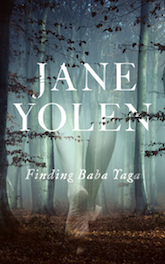

Finding Baba Yaga: A Short Novel in Verse
Perhaps the creepiest of these famous fairytale princes is Snow White’s prince. (Although the prince in the original Italian version of Sleeping Beauty would give almost any fairytale character a run for their money in pure creepiness. Trust me, read it and you’ll understand.) Basically, he comes in at the end of the story and falls in love with Snow White’s dead body. While this is true even in Disney’s version of the fairytale, in the original he convinces the dwarfs to let him carry it off to his castle. Once at the castle the prince becomes ever more obsessed with her body, and then by chance she wakes when the bit of poison apple she ate slips from her mouth. To be clear, the prince has absolutely nothing to do with the apple being dislodged. There was no heroic Heimlich maneuver in this story. Instead, one of the prince’s servants gets tired of carrying her heavy gold coffin around and, well perhaps it would be better to let the Brothers Grimm take it from here.
The prince had it carried to his castle, and had it placed in a room where he sat by it the whole day, never taking his eyes from it. Whenever he had to go out and was unable to see Snow-White, he became sad. And he could not eat a bite, unless the coffin was standing next to him. Now the servants who always had to carry the coffin to and fro became angry about this. One time one of them opened the coffin, lifted Snow-White upright, and said, “We are plagued the whole day long, just because of such a dead girl,” and he hit her in the back with his hand. Then the terrible piece of apple that she had bitten off came out of her throat, and Snow-White came back to life.
The prince in Snow White, though royal and we can assume handsome, is hardly heroic. In fact, when viewed from a strictly modern perspective, which admittedly can be a mistake given the different contexts given to the stories by the original storytellers and modern readers, none of these princes are terribly heroic or even particularly competent. Simone de Beauvoir put it succinctly in her book Second Sex, “What would Prince Charming have for occupation if he had not to awaken the Sleeping beauty?” I would only add that, as a career, awakening Sleeping Beauty or Snow White, or finding Cinderella doesn’t seem to be that impressive when you look critically at what it entails.
If Prince Charming is a non-entity in these stories—a non-entity that admittedly always gets the girl, but still a non-entity—how and why does he inspire such fascination? Perhaps, as with so many things, Disney is to blame. After all, the stories outlined above may have been the originals, but it is the Disney version of these characters that most people remember. Who can think of Cinderella without thinking of the beautiful scenes at the ball as she danced with her prince? Who can recall Sleeping Beauty without hearing the refrain, “I know you. I’ve walked with you once upon a dream?” And who does not think that true love’s kiss is perfectly embodied by the image of the prince waking Snow White from her deathly slumber? The image we have of the princes in these stories are inextricably linked with the images from those movies.
Disney can, perhaps, also be blamed for the prince character’s recent downfall into ignominy, because somewhere between Sleeping Beauty and Maleficent he was transformed from a suave, swashbuckling hero into a buffoon, unable even to bestow that most basic gift—love’s first kiss. Far from being brave or royal, the essence of most modern prince (or prince-like) characters, it would seem, is their ability to serve as a target for mockery. There is Gaston from Beauty and the Beast, the duplicitous Hans from Frozen, the outlaw and rake, Flynn Rider, who takes the place of a prince in Tangled, and either of the puffed up and insufferably conceited princes depicted in the musical Into the Woods. And of course Disney’s rivals are also quick to poke fun at the character, as with the eponymous Prince Charming from Shrek 2.
Through no fault of his own, except perhaps for having too little to say for himself, Prince Charming has become the ultimate symbol of soulless chauvinism. However, for our brave hero redemption may be at hand as other reinterpretations arrive that focus on the prince as a significant protagonist, and not as a prop to be used where convenient. There is Chris Colfer’s popular Land of Stories novels that introduce three Charming brothers who are each married to one of those famous princesses, and who are not entirely ridiculous, although a fourth Charming brother was transformed into a frog for being too vain. In my series of Charming Tale novels, A Fairy-tale Ending and the upcoming Pitchfork of Destiny, we follow Prince Charming as his quest to rescue the princess fails and he must find a new destiny for himself.
Retelling and recasting stories and characters is the ultimate hallmark of fairytale, and so it should not be surprising that Prince Charming’s story and character also get recast and retold. As a fan of the prince I hope we see more stories in the future that celebrate this, certainly royal, possibly handsome, and sometimes brave character. As G.K. Chesterton wrote, “There is the great lesson of ‘Beauty and the Beast,’ that a thing must be loved before it is lovable.” Maybe all Prince Charming needs to become the hero we all hope he can be is a little love.
Originally published October 2015.
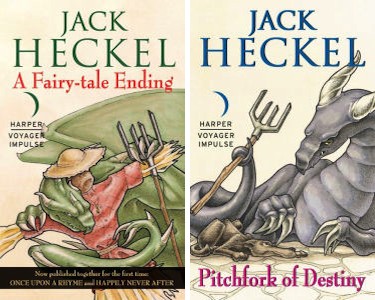 Jack Heckel is the writing team of John Peck, an IP attorney living in Long Beach, CA, and Harry Heckel, a roleplaying game designer and fantasy author. They are both celebrating the recent release of the A Fairy-tale Ending, which combines Volumes I & II in the Charming Tales series, and looking forward to the publication of Volume III in the Charming Tales series, Pitchfork of Destiny.
Jack Heckel is the writing team of John Peck, an IP attorney living in Long Beach, CA, and Harry Heckel, a roleplaying game designer and fantasy author. They are both celebrating the recent release of the A Fairy-tale Ending, which combines Volumes I & II in the Charming Tales series, and looking forward to the publication of Volume III in the Charming Tales series, Pitchfork of Destiny.










